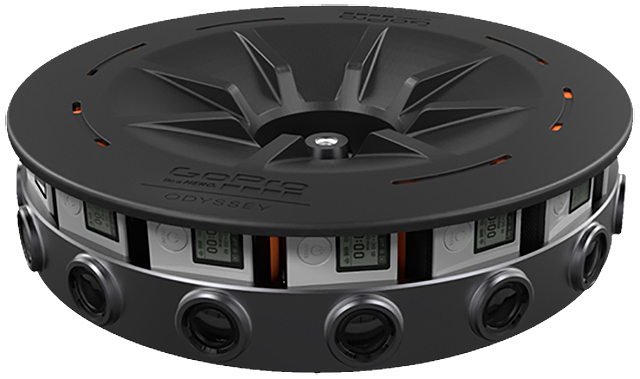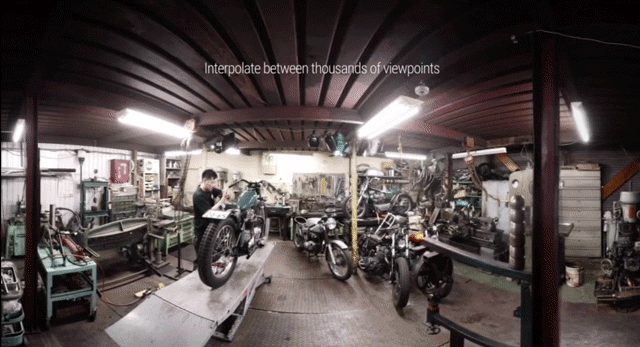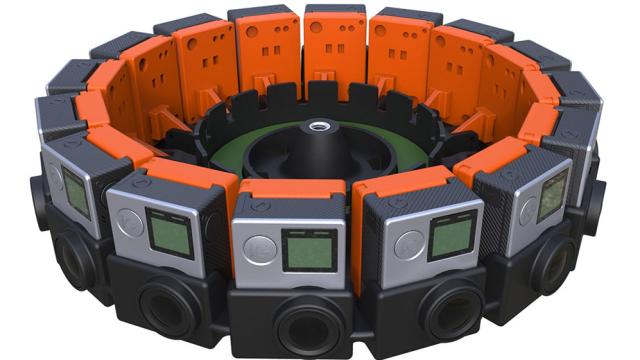This year, the most amazing thing I saw at Google’s annual developer conference wasn’t a phone, a tablet, or even a head-mounted display. It was a 360-degree 3D video that took me to Japan. Now, filmmakers can spend $US15,000 ($21,300 AUD) on the tech that made it possible: the GoPro Odyssey. It’s one heck of a camera.
OK, so I probably need to do a little explaining: the GoPro Odyssey isn’t a camera in the traditional sense. It’s actually an array of 16 perfectly aligned GoPro Hero4 Black cameras — the same $519 ones you’d mount on your surfboard or drone or mountain bike — plus some special Google hardware and software to combine them into a single 360-degree stereoscopic 3D video at 8K resolution and 30 frames per second. (It’s an incredible amount of data.)

What Odyssey looks like now. The top image in this post is what it looked like back in May.
The result is a video like nothing you’ve ever seen. You place your smartphone into a Google Cardboard VR headset, put it up to your face, and you’re somewhere else. A beach. A glacier. A cable car climbing up a Japanese mountain filled with sightseers like yourself. And the quality is far better than any other such 360-degree video I’ve seen, due to the way Google’s software computationally generates believable 3D no matter where you turn your head. No seams. With this camera, filmmakers could take you to all sorts of wonderful places.

You don’t technically need to buy a $21,300 GoPro rig to create such a video: Google’s initative, dubbed Jump, will actually let you 3D-print a frame to install your own cameras. But the GoPro Odyssey kit doesn’t just come with 16 cameras (and 16 cables, and 16 microSD cards, and… you get the picture) it’s also got the hardware to interface all of them together, custom firmware loaded onto the cameras, and a way to plug ’em all into an AC outlet simultaneously — so you don’t need to swap out 16 batteries in the middle of a shoot.
GoPro claims Odyssey allows the 16 Hero4 Black units to act like a single camera, with every pixel of every frame synced accurately.
Plus — since GoPro is Google’s primary partner — this is probably the only way you get access to Google’s super-impressive Jump video assembler technology for a while. Speaking of getting access, though, it may be rather limited to start: GoPro and Google are accepting applications now, but will only give “select content partners” the go-ahead to actually buy one.
In the meanwhile, there’s already a way for you to see what this camera is capable of: just direct your Chrome browser or the YouTube app on your phone to this video:
Be sure to tap and drag (or move your phone) to pan around. Or put on a Google Cardboard headset for the best results.
What if you aren’t a pro, yet you still like the idea of creating virtual reality videos? You could try a Ricoh Theta, which will let you publish non-3D spherical videos to YouTube and spherical photos to Google Street View. Or you could wait for GoPro to create a consumer-grade VR camera. I’m pretty sure that’s coming, too.
[GoPro]
